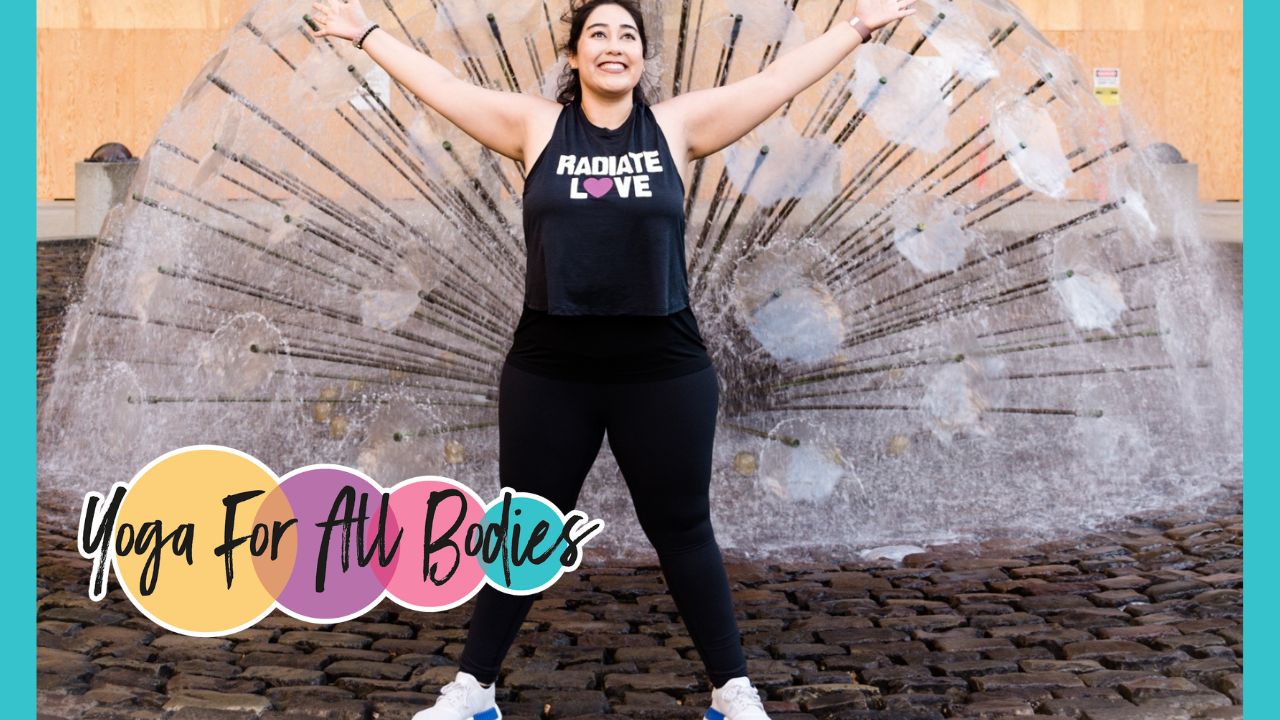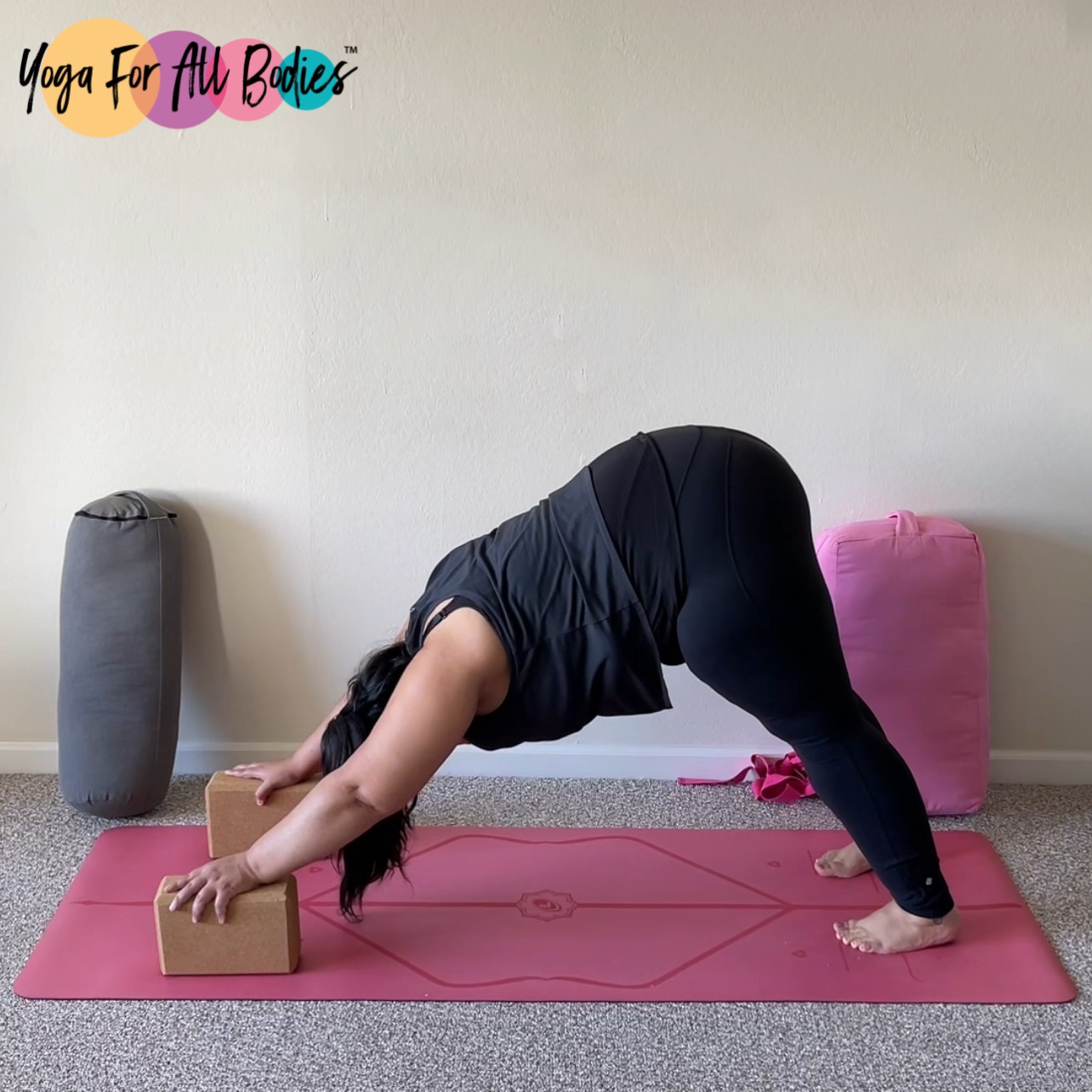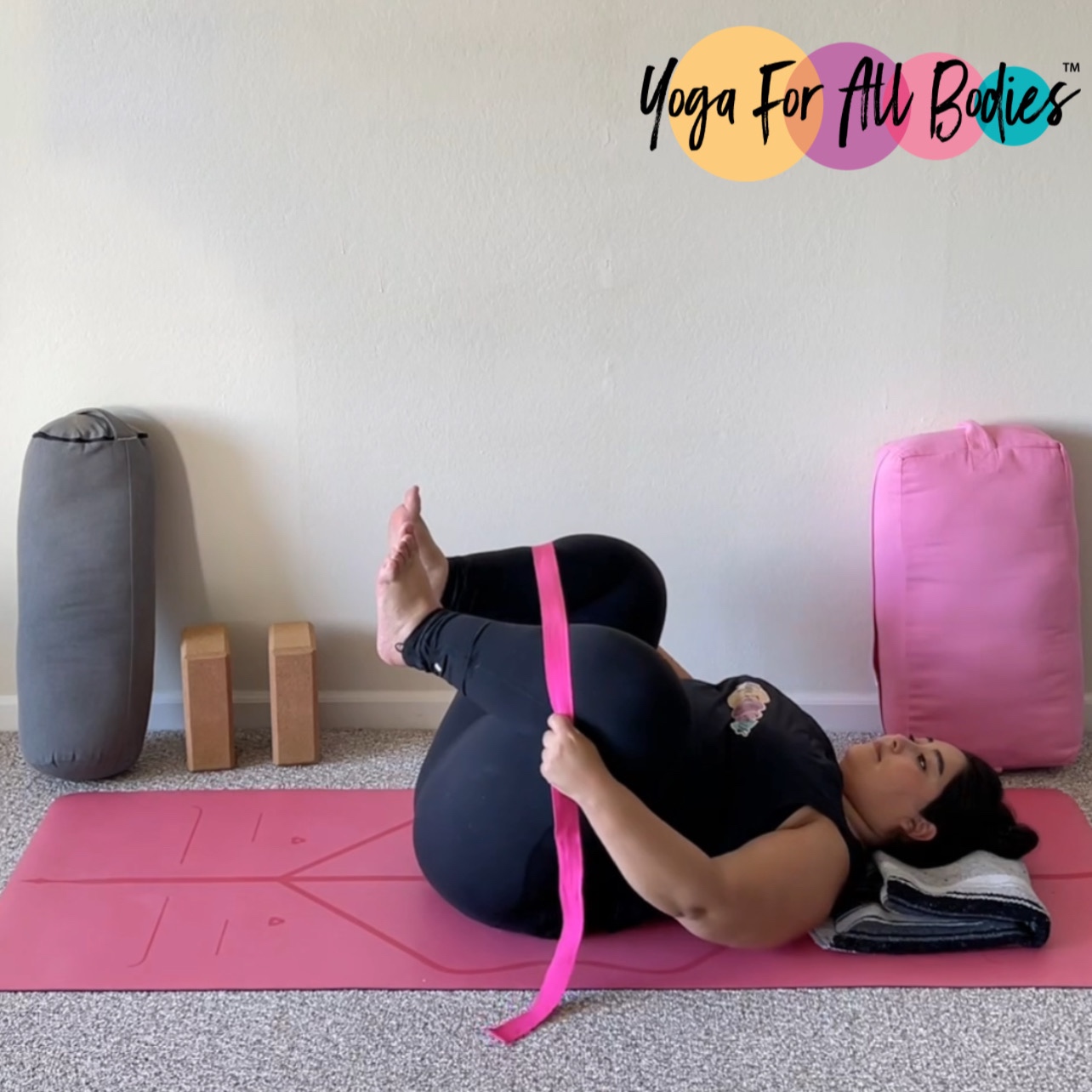15 Ways to Change the Narrative Around Larger Bodies in Yoga
Jul 20, 2023
 Hello hello, hola hola! I’m Natalia Tabilo, Founder of Yoga for All Bodies, and today I invite you to reflect on sharing yoga with students who live in larger bodies 🙂.
Hello hello, hola hola! I’m Natalia Tabilo, Founder of Yoga for All Bodies, and today I invite you to reflect on sharing yoga with students who live in larger bodies 🙂.
Whether on their social media or in their studios and trainings, many teachers make promises and statements like “everybody welcome,” “come as you are,” and “judgment-free zone” when the reality is that many of those teachers don't know how to serve people in larger bodies because they don't have the tools, they lack trauma-informed training and haven't yet opened the mind and heart to diversity. “everybody welcome,” “come as you are,” and “judgment-free zone” when the reality is that many of those teachers don't know how to serve people in larger bodies because they don't have the tools, they lack trauma-informed training and haven't yet opened the mind and heart to diversity.
Sadly, these statements and promises remain empty marketing slogans and social media hashtags to attract people into their offerings, but when the students get the courage to show up to their classes, they find themselves in spaces filled with ableism, diet culture and fat shaming.
Sessions and teachings that are full of stereotypes and assumptions around larger bodies, because most yoga teachers are taught to teach in a one-size-fits-all way, one “correct alignment,” one “full expression of the pose,” one “real pose” in which diversity of bodies is not celebrated.
One population that traditionally has been left out, unseen, and not considered in yoga spaces is people in larger bodies.
These students on many occasions become invisible to the teacher’s eye and need to adapt the practice for themselves, creating their own variations, or just keep watching other students as they practice or are told the default phrase, “Child Pose is always there for you” when the teacher is assuming that the student won't be able to “keep up with the class” or won't be able to do some of shapes or postures offered.
NO!!! It is the job of the teacher to provide the tools for everybody to enjoy the practice in the mind and body they have today! To question what they were taught in their 200 YTT, to question why they are saying some default phrases and cues, and it is the teacher's job to learn and educate themselves on how to serve people in larger bodies, yes yes yes!!
I’m extremely passionate about changing the narrative around larger bodies in yoga, so here are 15 of my favorite tips that you can consider following in your practice and teaching 🤓:
- Avoid and eliminate from your language the words overweight and obese. They imply there's a “correct” weight, but as we know less weight is not a synonym of health. I invite you to check out the BMI invention story please!
- Don't make assumptions based on how a person looks like! Fitness, stamina, flexibility and strength come in all sizes and shapes.
- Remember that people with larger bodies are not always beginners in the practice! And yes! They can be yoga teachers too!
- Alignment doesn't look the same in larger bodies! Forget about how a posture is supposed to look, and build bigger bases with the feet so people in larger bodies can take the space they need! Have in mind that parts of the body like the belly or chest get in the way while practicing, for example in forward folds, that's why you need to create more space!
- Use props to create new relationships with gravity! For example, placing blocks under the hands when planking or in Downward-Facing Dog allows the student to hold less weight in the arms. Also, use props to build accessible and wider seats; instead of inviting a student to sit on 1 block, normalize using more blocks. You can also use a strap as an extension of your arms in happy baby or knees to the chest 🤓. See these three photos:



- The nervous system might be dysregulated, activated or on guard because of previous trauma in fitness spaces, medical settings and systemic trauma in our society.
- Not every person with a larger body wants to lose weight.
- Yoga is not a place to talk about diet advice or food recommendations. There might be students in larger bodies who are living or recovering from eating disorders. So let your students know in advance if you will talk about this and let them decide of they want to participate.
- Eliminate diet talk and references to “fixing” or changing body parts like burning the muffin top, lean arms, yogi arms because basically, you're saying you are doing the work in order to not look like the person in larger body who is in your class.
- Consider that daily life — airplanes, public transportation, seats, etc. — is not made for people in larger bodies. People with larger bodies are holding themselves up to take less space, so yoga and stretching can be extremely beneficial.
- Don’t name your classes, trainings, workshops, and Youtube Classes “Yoga for weight loss” or “Yoga for the overweight.”
- Don’t assume people in larger bodies need or want your help, and please don’t become a savior or try to rescue them! Just because they live in a larger body doesn’t mean they need extra assistance. Treat them like any other student.
- Be explicit in your class descriptions, and everywhere that you share about your offering, that your classes are a weight-neutral space, that there’s no diet talk, and no body shaming is allowed!
- Teach with variations, not modifications. This means you are offering the options beforehand, not because you notice someone struggling or that can't do what you're offering.
- Start with yourself! Analyze yourself, we've grown up with this idea that thinner is better, healthier, or the goal! So analyze how you’re perpetuating stereotypes or beliefs that are not true.
P.S. If you want to know more I invite you to connect via IG @YogaForAllBodies, or join my learning opportunities and practice with me!
More info below 💖
Yoga for All Bodies Learning Opportunities
(Payment plans and partial scholarships are available!)
- Pre-Recorded Self-Paced Specialty Class: Teaching Yoga to Students in larger bodies. Enroll here and get instant access!
- Yoga for All Bodies Level 1 Teacher Training: next cycle starts January 2024. Save your spot now!!

Want to learn more?
Natalia Tabilo (She/Her/Ella) is the founder of Yoga for All Bodies™. She helps yoga teachers make their offerings more accessible, welcoming, and inclusive to all minds and all bodies in English and Español. To know more visit yogaforallbodies.com and @YogaForAllBodies on Instagram.
Stay connected with news and updates!
Join our mailing list to receive the latest news and updates from our team.
Don't worry, your information will not be shared.
We hate SPAM. We will never sell your information, for any reason.



